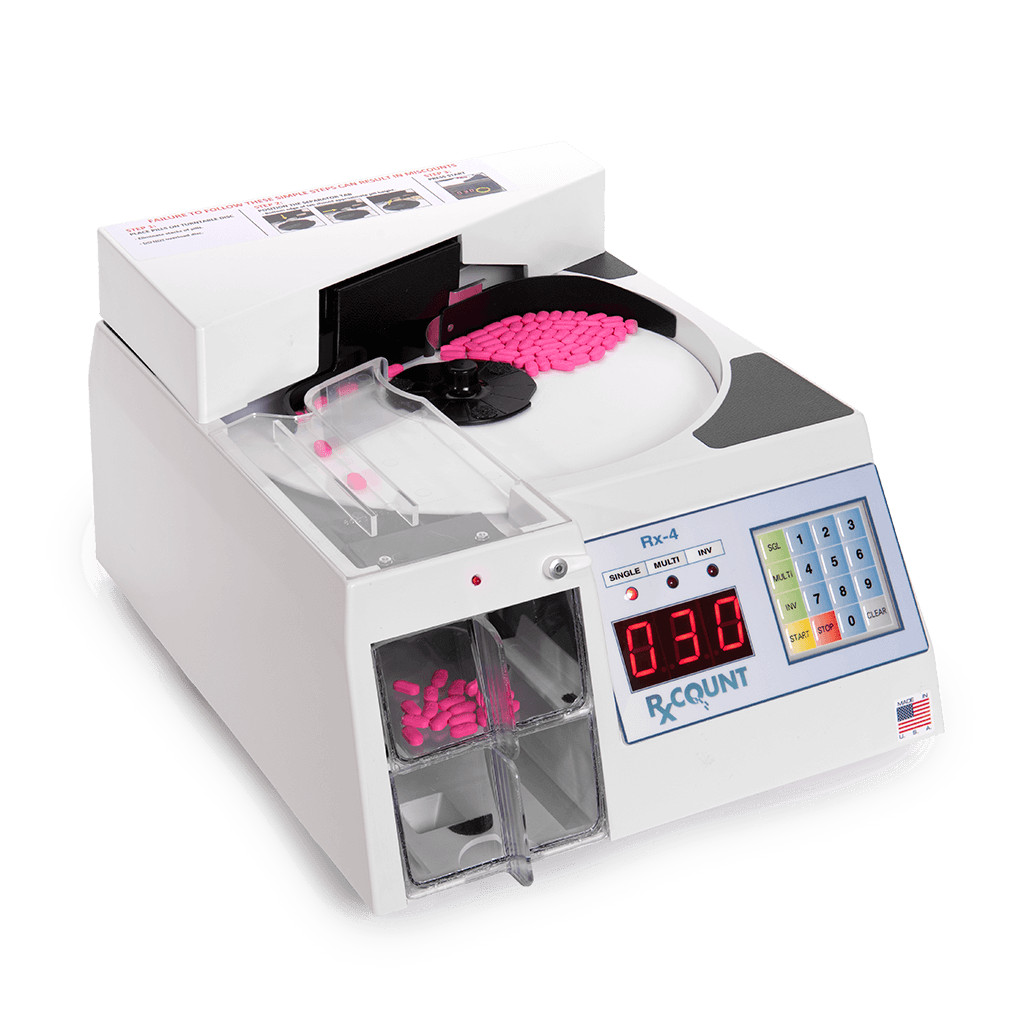
If you are a pharmacist (or tech) working at Costco, CVS, Rite-Aid, or another high-volume dispensary there are a lot of really cool machines available to help make your job easier. However, if you’re tired of counting pills by hand and you don’t really need security cabinets, robotic arms, thumbprint scanners, touch screens, printers, etc. you might be in the market for a table-top pill counter. An Internet search will quickly reveal that there are not a lot of options available (which is likely how you found this article!).
Rx Count Corporation produces only the Rx-4 automatic pill counter but we realize that our counter might not be the best choice for every user or application! Often times, depending on the speed, number of scripts, volume of pills, technical considerations, or other reason, our competitors’ models might be a better option. This purpose of this article is to take and honest look at the pros and cons of the top available options for an entry-level, table-top pill counting machine.
Here are the top available options in no particular order…
- Kirby Lester KL1
- GSE Eyecon
- Pharmacy scale (various manufacturers)
- Rx Count Rx-4
We have another blog post that specifically discusses pricing differences (https://rxcount.com/2019/03/12/how-much-do-pill-counters-cost/). Hopefully, this post will provide enough information to make the best choice for you!
Kirby Lester KL1:
- Accuracy: 99.97%
- Counting Method: Pour-through design where the user sprinkles pills into a funnel-like chute. Pills are counted as they fall vertically through the machine and are deposited in a collection tray which can be used to transfer pills to a vial.
- Benefits & Features: Fast speed of counting; no moving parts; high-tech sensor can detect partial pills & fragments; compact design; can count items other than pills
- Negatives: High price; user must be present to operate; pouring the pills too fast results in errors and miscounts; cannot pre-program desired amounts; sometimes have to manually add or subtract pills from the final count; difficult to clean contact surfaces; no direct vial-filling; design is not ideal for high-volume or bulk counting; expensive repairs
GSE Eyecon:
- Accuracy: 99%
- Counting Method: Machine vision technology. Pills are placed on a platter where the unit captures photo images and indicates the quantity on a display panel.
- Benefits & Features: Extremely fast counting; identifies foreign substances or broken pills; connectable to pharmacy management software; barcode scanner ensures correct medication is dispensed; saves photos of every count
- Negatives: Very high price; large footprint; only one method of counting
Pharmacy Scale:
- Accuracy: NTEP Class II (NTEP Class II devices are used for high-precision weighing 10,000 – 100,000 divisions)
- Counting Method: Scale counts by weight
- Benefits & Features: Connectable to pharmacy management software; barcode scanner ensures correct medication is being dispensed; compact design
- Negatives: Requires frequent calibration; only one method of counting; no direct vial-filling
Rx Count Rx-4:
- Accuracy: 99.97%
- Counting Method: Rotating turntable feeds pills through a self-adjusting gate past an infrared sensor. Pills are dispensed either into collection trays or directly into the final container.
- Benefits & Features: Affordable price; faster & more accurate than hand-counting; multiple counting options; direct vial-filling; compact & lightweight design; large, easy-to-read LED display; operator does not have to be present to operate; easy to clean; requires no calibration
- Negatives: Not as fast as Kirby Lester models; has moving parts; no software connectivity
Each of the above systems works very well in the right environment and hopefully, this helps with your decision-making process. We welcome any questions you might have.




